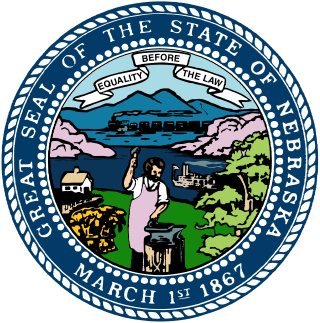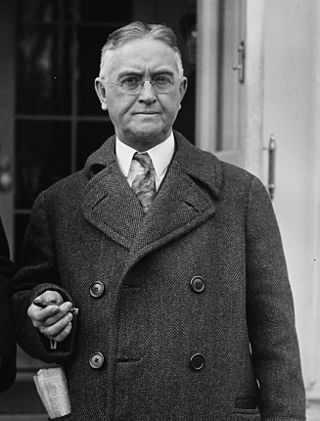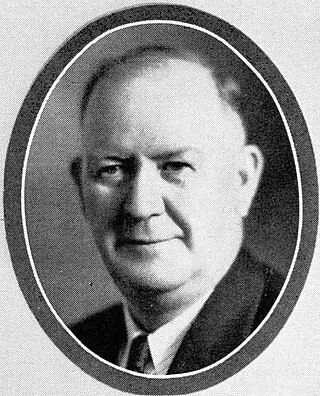
The 1974 Nebraska gubernatorial election was held on November 5, 1974, and featured incumbent Governor James Exon, a Democrat, defeating Republican nominee, state Senator Richard D. Marvel. Independent state Senator Ernie Chambers also captured 5% of the vote as a write-in candidate. This was the first gubernatorial election in Nebraska in which the nominees for Governor and Lieutenant Governor ran as a single ticket in the general election, though they were chosen in separate primary elections.

The 1964 Nebraska gubernatorial election was held on November 3, 1964, and featured incumbent Governor Frank B. Morrison, a Democrat, defeating Republican nominee, Lieutenant Governor Dwight W. Burney, to win a third and final two-year term in office.

The 1958 Nebraska gubernatorial election was held on November 4, 1958, and featured school superintendent Ralph G. Brooks, a Democrat, narrowly defeating incumbent Republican governor Victor E. Anderson, becoming the first Democrat to win the governorship since 1938.

The 1956 Nebraska gubernatorial election was held on November 6, 1956, and featured incumbent Governor Victor E. Anderson, a Republican, defeating Democratic nominee, former state Senator Frank Sorrell, as well as independent George Morris, to win a second two-year term in office.

The 1950 Nebraska gubernatorial election was held on November 7, 1950, and featured incumbent Governor Val Peterson, a Republican, defeating Democratic nominee, former state Senator Walter R. Raecke, to win a third and final two-year term in office.

The 1948 Nebraska gubernatorial election was held on November 2, 1948, and featured incumbent Governor Val Peterson, a Republican, defeating Democratic nominee, former state Senator Frank Sorrell, to win a second two-year term in office.

The 1946 Nebraska gubernatorial election was held on November 5, 1946, and featured former school superintendent and newspaper publisher Val Peterson, a Republican, defeating Democratic nominee, state Senator Frank Sorrell.

The 1944 Nebraska gubernatorial election was held on November 7, 1944, and featured incumbent Governor Dwight Griswold, a Republican, defeating Democratic nominee, busboy George W. Olsen, to win a third and final two-year term in office.

The 1942 Nebraska gubernatorial election was held on November 3, 1942. It featured incumbent Governor Dwight Griswold, a Republican, defeating Democratic nominee, former Governor Charles W. Bryan, to win a second two-year term in office.

The 1940 Nebraska gubernatorial election was held on November 5, 1940, and featured newspaper publisher and former state legislator Dwight Griswold, a Republican, defeating Democratic nominee, former U.S. Representative Terry Carpenter. Griswold became the first Republican to win the governorship since 1928.

The 1934 Nebraska gubernatorial election was held on November 6, 1934, and featured state engineer Robert L. Cochran, a Democrat, defeating Republican nominee, newspaper publisher and former state legislator Dwight Griswold.

The 1932 Nebraska gubernatorial election was held on November 8, 1932, and featured incumbent Governor Charles W. Bryan, a Democrat, defeating Republican nominee, newspaper publisher and former state legislator Dwight Griswold, to win a third and final two-year, non-consecutive term in office.

The 1924 Nebraska gubernatorial election was held on November 4, 1924, and featured former state Senator Adam McMullen, a Republican, defeating Democratic nominee, former state Representative John N. Norton, and Progressive nominee, Omaha City Commissioner Dan B. Butler.

The 1964 Nebraska lieutenant gubernatorial election was held on November 3, 1964, and featured 31-year-old Philip C. Sorensen, a Democrat, defeating Republican nominee Charles Thone. Incumbent lieutenant governor Dwight W. Burney decided to run for Governor of Nebraska and thus did not run for reelection as lieutenant governor.

The 1962 Nebraska lieutenant gubernatorial election was held on November 6, 1962, and featured incumbent Nebraska Lieutenant Governor Dwight W. Burney, a Republican, defeating Democratic nominee Rudolph D. Anderson.

The 1960 Nebraska lieutenant gubernatorial election was held on November 8, 1960. Prior to the election, on September 9, 1960, Nebraska Governor Ralph G. Brooks died while in office. This caused then Nebraska Lieutenant Governor Dwight W. Burney to become Governor of Nebraska two months before the election in which he was running for reelection as lieutenant governor. Thus, the 1960 lieutenant governor election featured incumbent Nebraska Governor Dwight W. Burney, a Republican, defeating Democratic nominee Norman A. Otto, who was chosen by the Nebraska Democratic Party to replace Edward A. Dosek, who had won the Democratic primaries but had withdrawn from the race.

The 1956 Nebraska lieutenant gubernatorial election was held on November 6, 1956, and featured Speaker of the Nebraska Legislature Dwight W. Burney, a Republican, defeating Democratic nominee Frank B. Morrison who had been chosen to replace original Democratic nominee Stanley D. Long who had died during the campaign.

The 1950 Nebraska lieutenant gubernatorial election was held on November 7, 1950, and featured incumbent Nebraska Lieutenant Governor Charles J. Warner, a Republican, defeating Democratic nominee Edward A. Dosek, a businessman, to win his second term as lieutenant governor.

The 1944 Nebraska lieutenant gubernatorial election was held on November 7, 1944, and featured incumbent Nebraska Lieutenant Governor Roy W. Johnson, a Republican, defeating Democratic nominee Edward A. Dosek.

The 1942 Nebraska lieutenant gubernatorial election was held on November 3, 1942, and featured Roy W. Johnson, the Republican nominee, defeating Democratic nominee Harry P. Conklin. The incumbent lieutenant governor, William E. Johnson, decided not to seek reelection in order to run for United States House of Representatives in Nebraska's First District in 1942.







